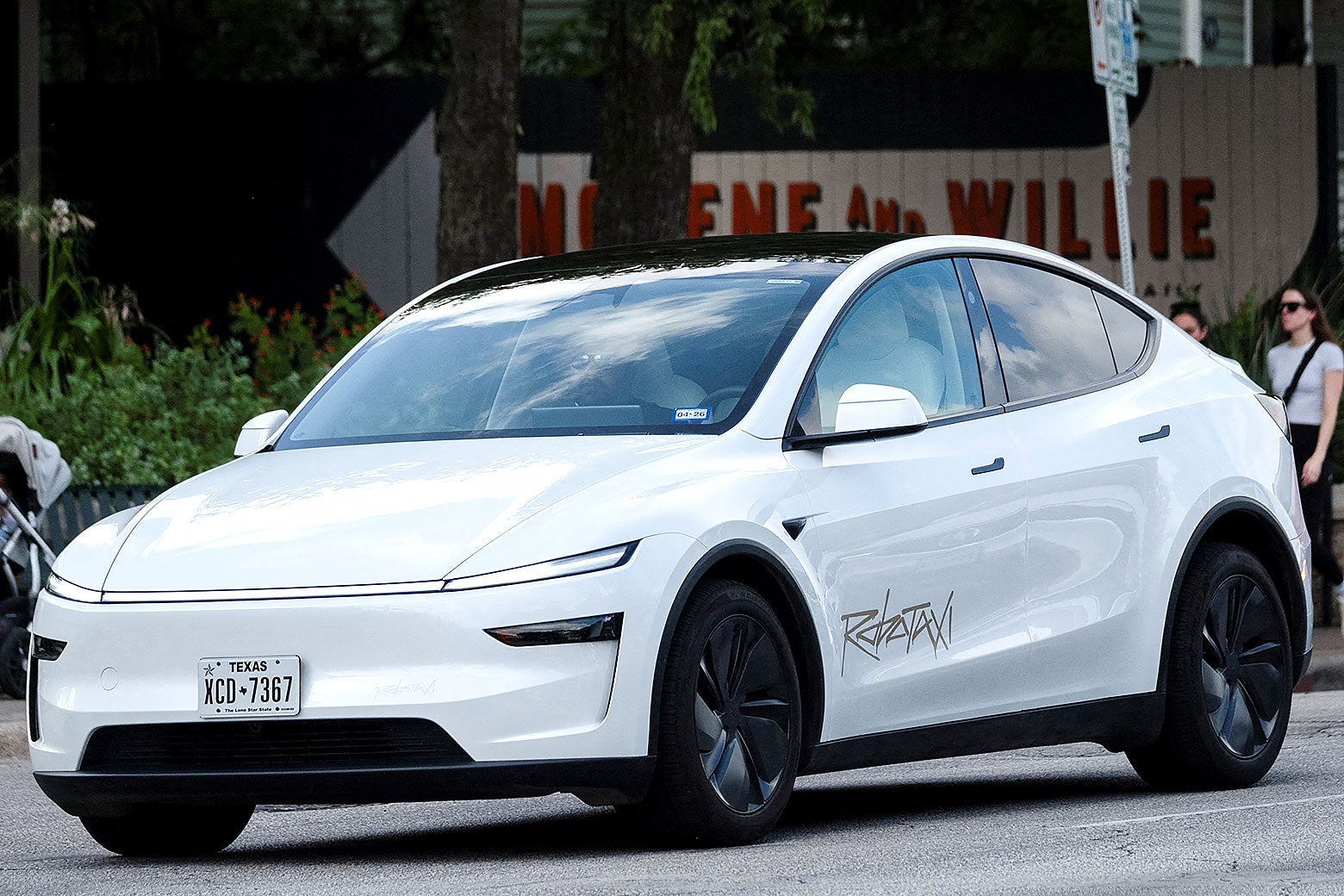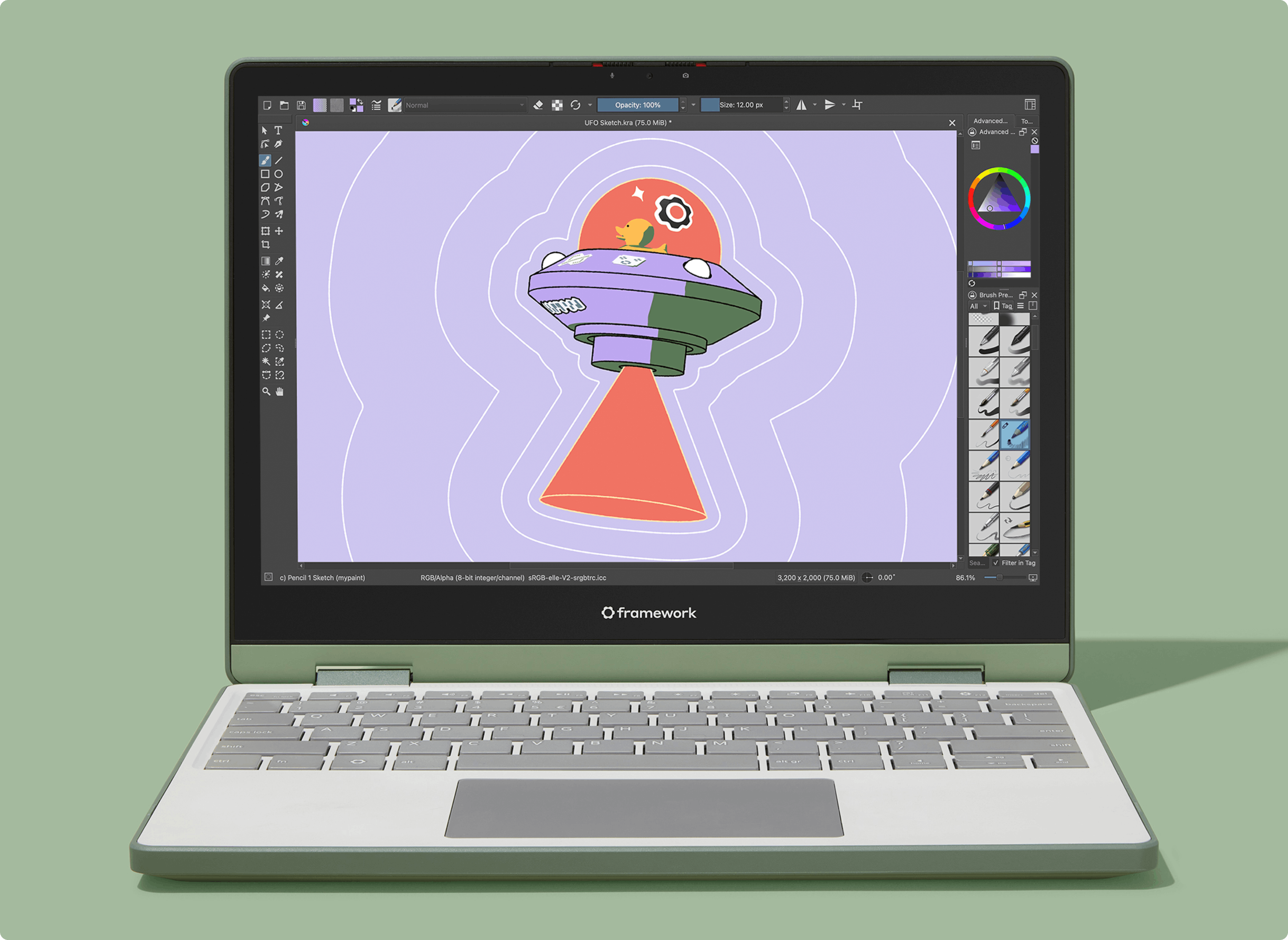*With human safety monitors sitting in front
By
Alex Kirshner
Enter your email to receive alerts for this author.
Sign in or create an account to better manage your email preferences.
Are you sure you want to unsubscribe from email alerts for Alex Kirshner?
Unsubscribe from email alerts
June 24, 20252:18 PM

Sign up for the Slatest to get the most insightful analysis, criticism, and advice out there, delivered to your inbox daily.
Tesla launched its robotaxi service on Monday in Austin, with only a few cars involved but a great deal of fanfare. The discrepancy is best explained by one Wikipedia page: “List of predictions for autonomous Tesla vehicles by Elon Musk.”
If you are Musk, a person who is addicted to consuming every possible piece of media about yourself and who purports to hate Wikipedia for alleged “far left” bias but probably just hates it for how it portrays you specifically, this page is brutal. So far, the article has graded 21 Musk promises or predictions that he issued with a time horizon. He has failed to meet 19 of them, and they all have this ugly shade of red on the Wikipedia table. It’s just a huge pile of entries that read “No” with a red X. Two of Musk’s predictions have yellow resolutions indicating that Tesla kind of, sort of did what he said.
Among the claims for which Musk did not come through is this one from 2019: “Next year for sure, we’ll have over a million robotaxis on the road.” No human in the history of the world has blown more smoke up our societal ass about the coming ubiquity of autonomous cars in general and Tesla ones in particular, but on Monday, Musk did indeed put approximately 20 robotaxis on the roads of Austin, Texas—five years late and at least 999,981 cars short.
It now appears that Musk has gotten some bang for his buck by repeatedly talking up Tesla’s robotaxi future. He has spent so many years building up expectations and failing to meet them that any tangible progress in the autonomous vehicle game looks like a breakthrough. No individual has associated himself more closely with self-driving cars while doing so little to put them on the road, but now Musk has released (the smallest beta of) a product, and investors who were eager to get excited about a Musk autonomous vehicle project have their chance. Next, we’ll find out how long that can last.
After an uneventful day of 20-ish cars driving around Austin with a safety monitor sitting in the passenger seat to make sure nothing went terribly awry, we can see what the news cycle has brought the company. In one day of Tesla’s (sort of) autonomous taxi service operating in one city without any of its cars getting a murderous mind of their own and plunging their passengers into a ravine, Tesla stock jumped 8.2 percent.
The company added $96 billion in market capitalization, a tidy $12 billion one-day bump for Elon. This isn’t quite as big a movement as the 14 percent haircut Tesla took when Musk cost the company its premium for having presumed oligarchic control of the federal government, but it was a solid effort. (The stock was falling on Tuesday morning, and we all awaited the next climb or dip on the roller coaster.)
There are execs for whom a decade of unkept promises about a specific product might become a credibility problem that drags the stock price. For Musk, it seems to have only lowered the bar, giving him a surging stock for the mere act of launching an unscaled version of something he promised half a decade earlier. It has to rule to be Elon Musk.
What will come next for the robotaxis will be fascinating. Despite only a handful of Tesla’s even being on the road, user videos showed enough lousy driving that the National Highway Traffic Safety Administration has gotten in touch with the company. “Tesla Daily,” an influencer with more than 200,000 YouTube subscribers, shared a harrowing video of the robot car cutting halfway across a double yellow line into the oncoming lane. A few months ago, it would have been hard to fathom federal authorities hassling Tesla over pretty much anything. Now, who knows.
In the longer term, Musk has made—and you’ll be shocked here—some enormous claims about what robotaxis could mean to the company’s future. Both Musk and some of the company’s most bullish investors have used the word “trillion” in assessing how much value the robotaxi business could one day create for Tesla. He recently said that the enterprise would be like “Airbnb on wheels,” with a business plan that is possibly ridiculous but definitely fun: He has told people to imagine sending their robot cars on paid errands for others when their owners aren’t driving them. This notion hasn’t made it to the Wikipedia list of Musk’s AV claims, likely because he hasn’t put a deadline on himself.
Musk has been talking in this language for so long that it doesn’t even feel quite right to parse his latest autonomous vehicle hype cycle as a way to cover for his recent political problems. This guy was selling a futuristic and profitable vision for cars driving themselves long before he became a right-wing conspiracy theorist, social media network operator, and political kingpin. But recent pressures on Tesla’s business, be they electric vehicle competition or Musk’s personal toxicity, have probably made robotaxis more enticing.
The robotaxis are at least playing in a newer market of autonomous rideshare, unlike Tesla’s cars in general, which are getting more competition all the time from manufacturers that didn’t always pose so much of a challenge. And while there might be tens of millions of Americans who would never consider buying a Tesla because of Musk’s behavior, there are probably fewer who wouldn’t let a cool robot car drive them to a bar. (I am sure that plenty of people have canceled Ubers upon seeing that they’re Teslas, but we don’t hear about it much.)
Autonomous taxis may or may not be a great business. We know from Alphabet’s years of developing Waymo that it takes a long time (we still don’t even know how long) to sniff profitability. We know that the bar is high for both reliability and affordability, but we don’t know if any company can meet both. We can predict that if Tesla and its competitors succeed in offering mass-adopted autonomous taxis, we will need more roads for those taxis to share with the current glut of human-driven cars. It’s a big bet, one that will require burning many more billions of dollars to achieve and that could fail anyway. The bull market for robotaxis may not last, but the one for editors of one specific Wiki page definitely will.
Sign up for Slate's evening newsletter.









 English (US) ·
English (US) ·